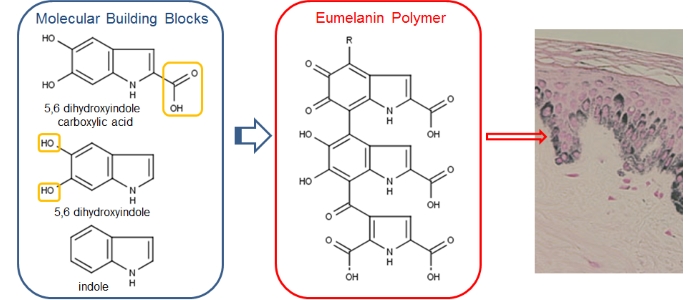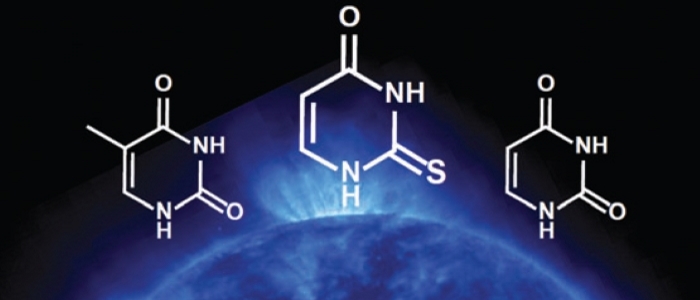Research Projects Time-resolved Spectroscopy

Photoprotective Properties of Eumelanin Building Blocks
Photophysics of Substituted Indoles
Skin is our front-line defense to ultraviolet (UV) radiation exposure. The color of our skin, which is largely determined by the pigment eumelanin, is thought to be a key player in this process. The mechanism itself, generally termed photoprotection, is investigated here using a bottom-up approach: studying the building blocks of eumelanins, grasping a molecular level understanding of how these precursors respond to UV radiation and then applying this knowledge to comprehend photoprotection of larger polymeric systems and eventually eumelanin itself.

Photophysics of Natural and Modified DNA Bases
Internal Conversion and Intersystem Crossing Pathways
An important premise of the molecular origins of life is the availability of a large variety of organic heterocycles in the so-called ‘‘primordial soup’’ to supply the building blocks for genetic material. Besides replication and information transfer, another requirement for prebiotic genetic material is the ability to retain chemical integrity under the harsh radiation environment on early Earth. The canonical nucleobases are generally considered to be photostable under UV radiation due to their ultrafast excited-state deactivation to the ground state either directly or via intermediate singlet excited states. This view has recently been challenged, with a number of studies reporting that a small fraction of the excited-state population might become trapped for prolonged times, e.g., in dark singlet states or meta-stable triplet states. For non-canonical nucleobases the extent of this trapping can vary considerably, which could have important consequences for their photostability.

Ultrafast Dynamics in Nanomaterials
Charge Carrier Dynamics in Photocatalytic Materials
This project using time-resolved transient absorption spectroscopy to investigate ultrafast processes in photocatalytic material. This is a new research direction in our group. In our preliminary studies to characterize our pump-probe set up we are currently looking at simple nanomaterials based on copper oxides.